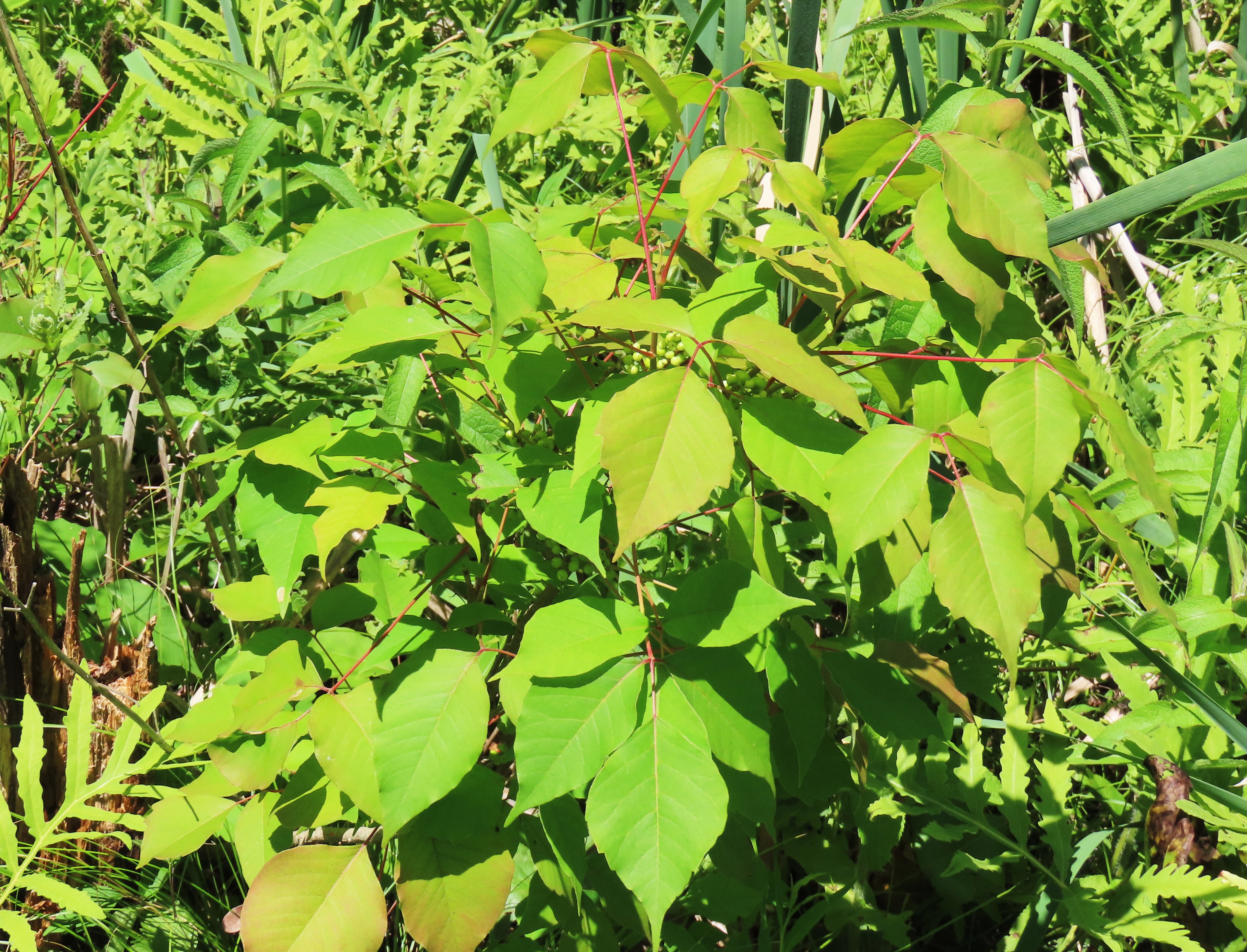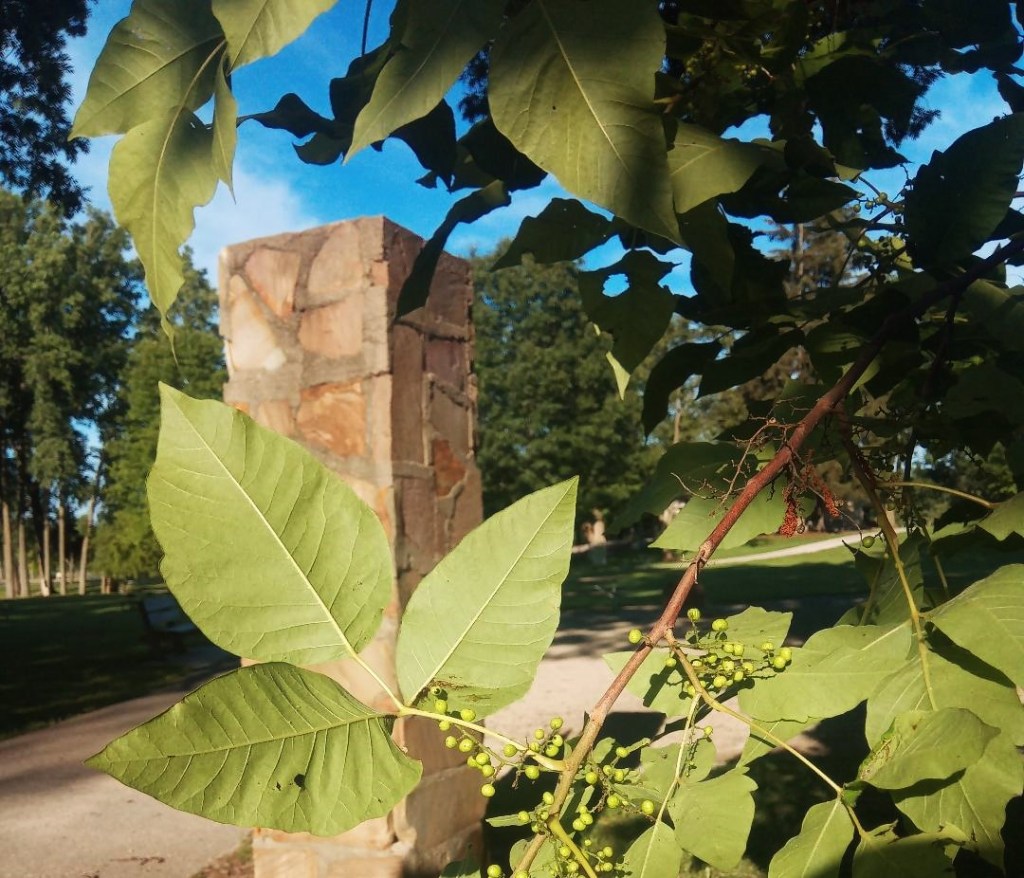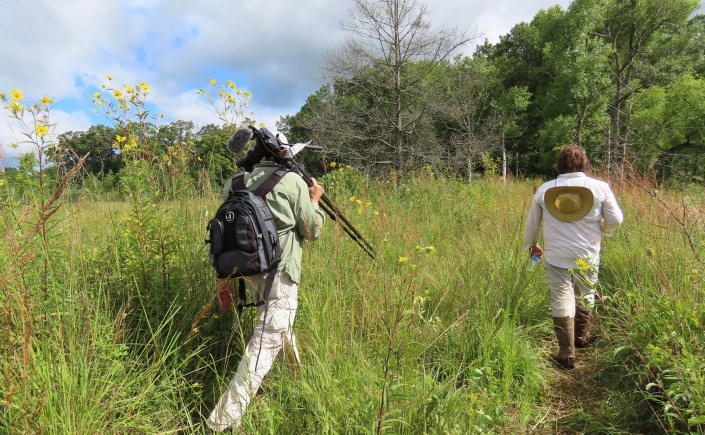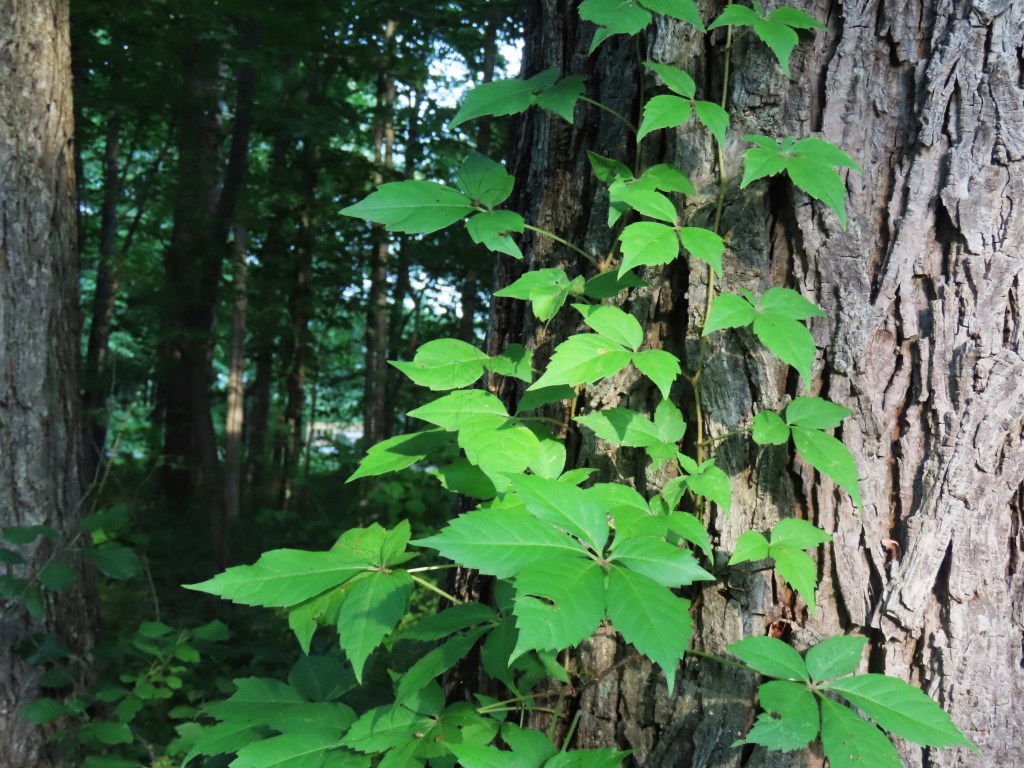WILDER SIDE OF OAKLAND COUNTY
Summer is a great time for outdoor adventure. It’s the season for picnics, fishing, hiking, gardening, yard work, and early-morning trail running. But don’t end up like poor Leo. Leo is now homebound and totally miserable because of poison ivy. An extremely itchy, red rash with painful blisters covers his arms, legs, neck, upper chest, and much of his face, a face that’s slathered with calamine lotion. Note: “Leo” is not an actual patient I have treated or observed while working as an ER paramedic.
During the holiday weekend, Leo failed to identify a bushy growth of shiny green plants at the edge of his heavily wooded yard. He just knew those rapidly growing weeds were an unsightly nuisance. They had to go. Leo did what he thought was best and hacked away at the cluster and mowed over the fallen remains. He then yanked at adjacent vines clinging to a tree. After the stubborn vines finally broke free, he pulled out most of the visible roots and wiped the sweat off his brow with the back of his hand. To wrap up the afternoon’s work, he carried everything back to the brush pile to burn. Mission accomplished, so he thought. Little did he know that less than 48 hours after he carried out his attack on that overgrown area of his yard, poison ivy would strike back with a vengeance. A visit to the ER followed the next day.


Summer heat combined with heavy rains fueled this season’s extraordinarily rapid growth of poison ivy. Doctor’s offices, walk-in medical clinics, and emergency rooms will likely be seeing increasing numbers of patients with blistering rashes and, in some cases, facial swelling or difficulty breathing. Some patients will know what they were exposed to. Others, like Leo, will not because they failed to recognize poison ivy and its highly variable forms or did not know that every part of the plant, including roots and vines, is potent.

It’s time to get to know growth facts about poison ivy (Toxicodendron radicans), a native plant that is perhaps one of our most despised plants, not only because of the potential for causing an itchy rash with weeping blisters, but because its growth, habitats, and forms are so variable that it often goes unrecognized and is confused with other plants. As little kids we all learned, “Leaflets three, let it be,” but those five words usually fail to make a positive identification, especially when we are not looking for the plant. To make matters worse, Virginia creeper, a tree-climbing vine with five leaflets, is commonly confused with poison ivy, and those two species are often entwined together on tree trunks.
Poison ivy can creep along the ground at the height of wild strawberries. It can climb up a tree and tower high above the ground with side branches that can be over six feet long and droop down to face-slapping height, much to the chagrin of trail runners and hikers. It can also appear in the middle of fields at chest height in a shrub-like form.



Poison ivy is considered an early successional species. That means it tends to grow where human activity has created a soil disturbance or a windstorm has downed trees and created gaps in the canopy, allowing increased sunlight. It’s very common along the edges of some of our most popular trails. Poison ivy is thriving on a tree just yards from a parking lot that’s next to one of my favorite lakes in northern Oakland County. I’ve encountered monstrous poison ivy vines that are as thick as my wrist and are about fifty to sixty feet tall when following its lakeside trail, creating their own canopy of shade.




All parts of poison ivy, including the berries, roots, and vines, contain urushiol (pronounced oo-roo-shee-awl) which is a potent allergen and may lead to serious allergic reactions in some people. The CDC shares the science behind how urushiol affects us in this technical and artistic video:
I talked with my friend Stuart Etengoff DO, an Emergency Physician in the Clarkston area, for clarification on the process of exposure. He explained that contact dermatitis is an inflammation of the skin caused by direct contact with an irritant or an allergen, such as urushiol. About 75% of the population is sensitive to poison ivy. The reaction tends to get more severe with each repeated exposure, but it rarely causes an anaphylactic reaction. The fluid in the blisters does not contain urushiol, hence the blisters cannot spread the reaction. However, urushiol can be attached unseen to clothing, gloves, tools, or even dog or cat fur, and can cause a reaction when transferred to a human. The reaction typically starts 6 to 48 hours after exposure and can last for up to two to three weeks. Etengoff emphasized medical attention should be sought if skin continues to swell, blisters look infected, or the rash affects the eyes, mouth, or genitals, or if there is trouble breathing.

The Wilderness Medical Society published a story about plants that cause contact dermatitis in the June issue of their professional magazine. In references to poison ivy they wrote, “Urushiol oil can stay active on surfaces, including dead plants, for up to five years or longer.” Bennett, Brad L., and Tony Islas. “Toxicodendron Dermatitis: Are You Up-to-Date?” Wilderness Medical Society, 15 June 2021. They also advised that exposure leading to contact dermatitis often occurs unknowingly when urushiol becomes airborne from brush-hogging operations, binding to smoke particles in burning brush piles, or simply from using lawn mowers or weed wackers that slice into poison ivy. Their exposure facts certainly played a significant role in the creation of Leo’s woes and misery after his yard clean-up gone wrong.
Poison ivy is not, however, without significant redeeming qualities. In early spring, newly emerging leaves have an attractive reddish tinge, and their leaves take on eye-catching hues of beautiful red and orange colors in autumn. Sometimes, their colors are so spectacular they blend in, almost unseen into autumn tree foliage. Their small but bountiful berries are just now emerging and will persist well into winter, feasted upon by many species of birds and small mammals. Black-capped chickadees and wild turkeys are two of the winged “culprits” who unknowingly spread the plant far and wide in Oakland County.




Poison ivy roots stabilize steep embankments and eroded lakeshores. Some of the most important and least recognized underground works of poison ivy occur along Michigan’s magnificent sand dunes, especially at Sleeping Bear Dunes National Lakeshore where hidden rootlets grasp onto soils and shifting sands near trails, along the shoreline, and on the park’s Manitou islands.


As the heat of summer sizzles on, poison ivy will continue its never-ending quest to make life miserable if you are not watchful for its presence. Don’t be like Leo! Learn to recognize and coexist with poison ivy in its many forms, and enjoy the natural wonders of summer.

Jonathan Schechter is the nature education writer for Oakland County Government and blogs about nature’s way on the Wilder Side of Oakland County.
Follow along with Oakland County on Facebook, Instagram, LinkedIn, Pinterest, Twitter, and YouTube using #OaklandCounty, or visit our website for news and events year-round.




Best description of the life cycle variations and growing preferences of Poison Ivy ever! This should be taught in schools.